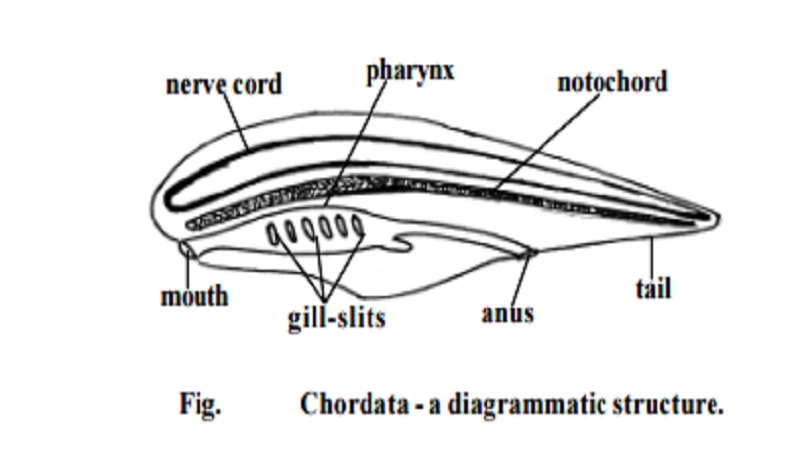Chapter: BIOLOGY (ZOOLOGY) Standard XI first year 11th text book Assignment topics question and answer Explanation Definition
Phylum Chordata and Diversity and General Characters of Chordates

Phylum Chordata
This phylum derives its name from one of the common
characteristics of this group namely the notochord (Gr. noton,
back + L. chorda, cord). The animals belonging to all other phyla
of the Animal Kingdom are often termed 'the non -chordates' or 'the
invertebrates' since they have neither notochord nor backbone in their body.
The backboned animals (vertebrates), together with a few closely
re-lated animals which do not possess a backbone, are included in this phylum.
Most of the living chordates are familiar vertebrate animals. The chordates are
of primary interest because human beings are members of this group.
Diversity of Chordates
The chordates exhibit an astonishing diversity in form,
physiology and habits. The number of chordate species is limited. About 49,000
species are on record which are only half of the living species of molluscs and
less than one tenth of arthropods. Despite their modest number of species, the
chor-dates make remarkable contribution to the bio-mass of the earth. Nearly
all of them are medium to large in size. The vertebrates in particular are
consider-ably larger and many of them are among the largest of living animals.
The gigantic blue whale which is 35 meters long and 120 tons
in weight is the biggest known animal. The smallest vertebrate , philippine
goby is a fish, measuring only 10 mm in length. The chordates are able
to occupy various kinds of habitats. They have adapted themselves to more modes
of existence than any other group. They are found in the sea, in freshwater, in
the air and on all parts of land from the poles to the equator.
General Characters :
The three distinctive characteristics of the chordates are the
presence of notochord, dorsal tubular nerve cord and pharyngeal
gill slits.
1. Notochord :
During the embryonic development of a chordate there appears a
sup-porting rod called the notochord. It lies dorsal to the
alimentary canal and ventral to the nerve cord. In some chordates this
structure persists throughout life. In others it is partially or completely
replaced by a ' backbone'. It is made up of separate bony
elements or vertebrae.Structurally it is com-posed of
large number of specialized vacuolated cells. It is surrounded
by fibrous and elastic sheath. The stiffness of
the notochord is due to the tur-gidity of fluid-filled cells and surrounding
connective tissue sheath.
2. Dorsal tubular nerve cord
The nerve cord lies just above the notochord and remains
entirely out-side the coelom. It is a tubular structure having a small hollow
canal running from one end to the other. The dorsal hollow nerve cord persits
throughout the adult life of almost all chordates.
3. Gill slits or Pharyngeal clefts
These are paired lateral clefts leading from the pharynx to the
exte-rior. They are present throughout life in fishes and a few tailed
amphibians. In amphibians, like frogs and toads it is found only in the larval
stages. In higher vertebrates (reptiles, birds and mammals) they are embryonic
and non-func-tional.
4. Ventral heart
The heart is
chambered. It is located ventral to the alimentary canal.
5. Closed blood vascular system
In chordates, the blood passes through a continuous system of
tubes namely arteries, capillaries and veins.
6. Hepatic portal system
In chordates, the food laden blood from the digestive tract
passes through the capillary net work in the liver, before reaching the heart.
Thus the veins originating from the digestive tract as capillaries and ending
in the liver again as capillaries constitute the hepatic portal system.
Classification.
The Phylum Chordata is
classified into four sub phyla:
Sub phylum 1. Hemichordata,
Sub phylum 2. Cephalochordata
Sub phylum 3. Urochordata
Sub phylum 4. Vertebrata.
First three sub phyla are collectively known as Protochordates.
Since the members of these sub phyla do not have a cranium or skull they are
also referred to as Acrania.
Related Topics